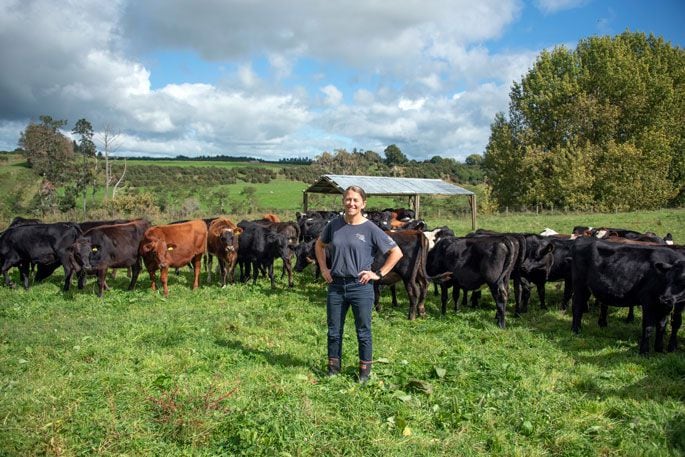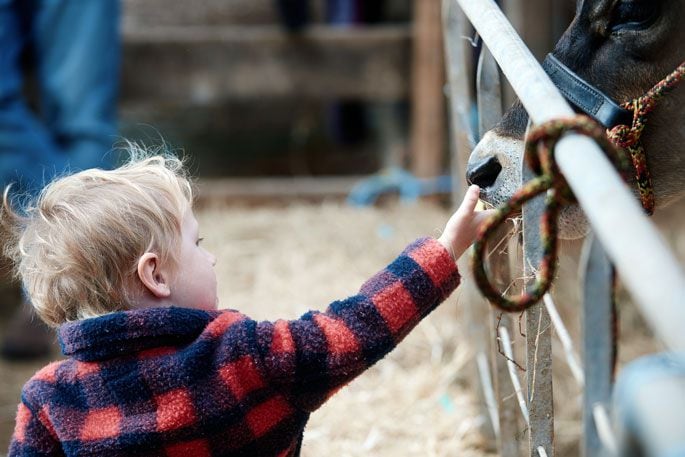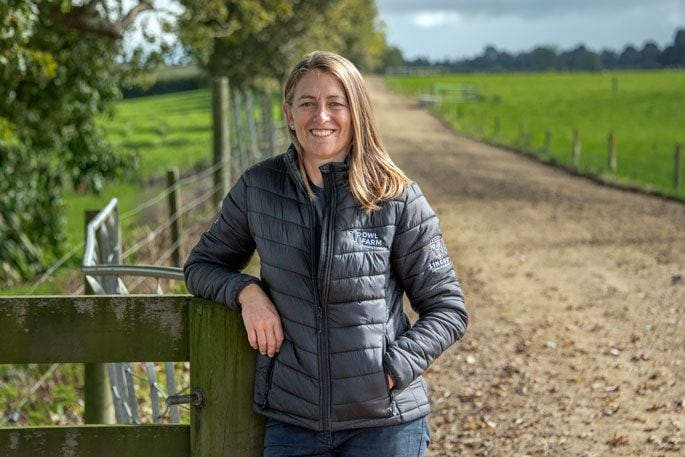It has been two years since Coast & Country News caught up with demonstration manager Jo Sheridan at Owl Farm, Cambridge. The dairy farm is a commercial venture at St Peter’s School and a well-known demonstration farm, which makes public all its statistics and spending, including its successes and mistakes.
Since 2022, the farm area has been reduced from 144 hectares to 130 as some less productive land has been sold into residential subdivisions. Cow numbers have been reduced from 410 to 350 for the 2023 season with new farm manager Tony Alarca at the helm.
Plantain
With the farm nestled alongside the Waikato River, nitrate leaching has to be addressed by Owl Farm and it has to be ready for any rule changes that may be applied for water quality.
“As science is recognising the positive impact that plantain is having on soil nitrogen loss, we are now into our fourth year of adding 4kg/ha plantain seed into any new, permanent pasture,” says Jo.
The farm uses no tilling and in spring plantain is broadcast to establish in the pasture gaps of existing paddocks.
“DairyNZ research is already proving that there is 1 per cent reduction in nitrogen leaching for every 1 per cent plantain present in a sward.”
Paddocks to be planted with plantain must first be weed-free as many weed sprays also kill plantain. Plantain lasts for three to four years before requiring replanting and is reasonably cheap to buy, making it a cost-effective way to mitigate nitrogen leaching.
“Plantain acts as a diuretic, meaning the cows urinate more frequently, more diluted and more evenly spread over the paddock and the rye grass thrives on the nitrogen in the urine.”
Good plantain growth produces quality feed over the summer but growth slows in the winter. Jo says the farm plans for that by assuming that, if plantain is 5-10 per cent of the pasture, there will be a reduction in feed available during the cooler months.
Calves and chicory
For four seasons, Owl Farm has been using a chicory-based diet for its replacement calves. Three years were straight chicory and, last year, Italian and red clover were added to the mix.
“On average, over a four-year period, our calves put on 0.7kg of live weight a day,” Jo says. “We utilise PK and grass silage to maintain growth rates during challenging summers, but that is lessening as we introduce variety to the pasture mix.”

Jo with the thriving calves. Photo: Catherine Fry.
The Owl Farm replacement calves are bred using sexed semen from high-quality cows with elite genetics. Calf DNA is tested at a genomic level to help decide which calves to keep for the herd.
“We’ve seen results with our herd now being in the top 3 per cent BW index in New Zealand. It would be hard for us to top that.”
Measuring CO2 on farm
After being approached by the University of Waikato, Owl Farm agreed to the installation of a carbon dioxide (CO2) measuring station.
“The placement allows measurement of CO2 emissions and soil carbon content from chosen paddocks as we carry on with normal farm management practices and summer cropping.”
Three years into the six to eight-year project, some data is already available, and Jo is using it to make decisions.

Plantain is a cost-effective way to mitigate nitrogen leaching. Photo: supplied.
“Using our normal farm management practices, such as lessening soil disturbance and minimising fallow periods for paddocks, reduces loss of soil carbon.”
In four to five years there will be substantial data available from this research.
Community and educational opportunities
Owl Farm had its seventh annual open day in April 2024 and recorded more than 750 visitors, the largest attendance yet.
“The majority of the visitors were town-based families with kids,” Jo says. “Ninety per cent of them had never been to Owl Farm before, 40 per cent had visited one to five farms previously and 25 per cent had never been to a farm before.
“This type of day is so important for people to connect with farming life. There were activities around native trees, feed, nutrients and finances. Visitors could watch milking and we had animals to interact with.”

Visitors enjoyed interacting with the animals at the seventh Owl Farm open day. Photo: supplied.
Returning to the events calendar was the Agri Skills and Education Day, when the farm hosted Year 9 to 13 students from five secondary schools who were studying agriculture.
Volunteers from WaiBOP Regional Young Farmers and Federated Farmers, St Peter’s Agri Centre, and several local rural suppliers and businesses set up farming skills activities and modules for the students to compete against each other.
“The aim was to encourage students to enter the Young Farmers competitions and also foster good community ties with suppliers. It’s important to keep students that are studying agriculture and horticulture subjects engaged and connected with the industry, as they are the future of New Zealand farming.”



0 comments
Leave a Comment
You must be logged in to make a comment.